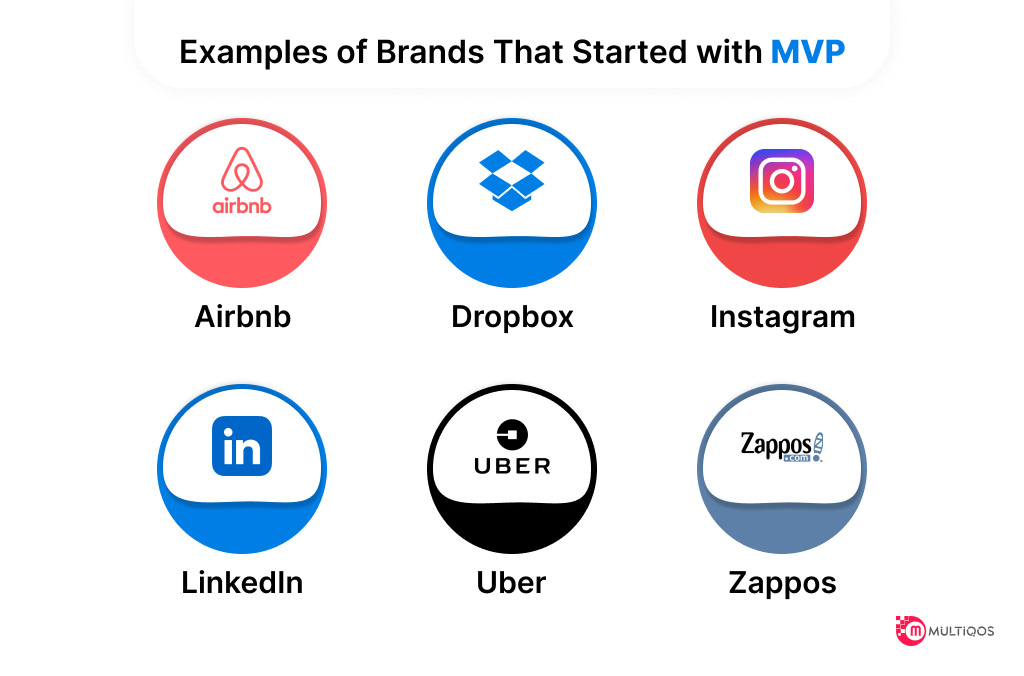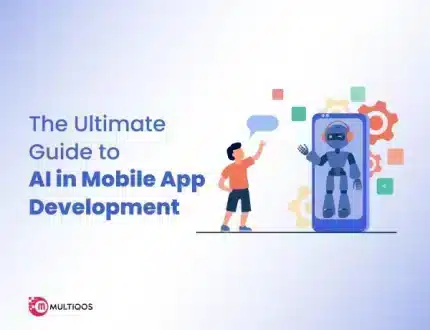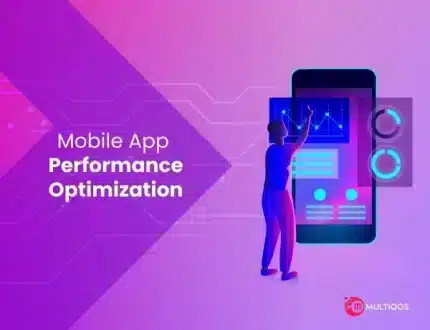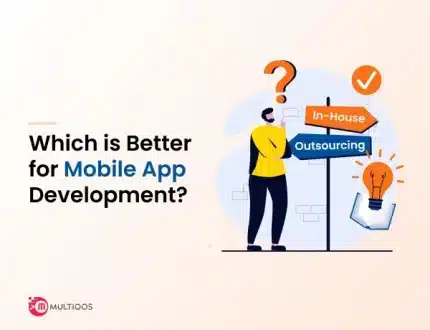What Makes Flutter the Perfect Choice for MVP Development?
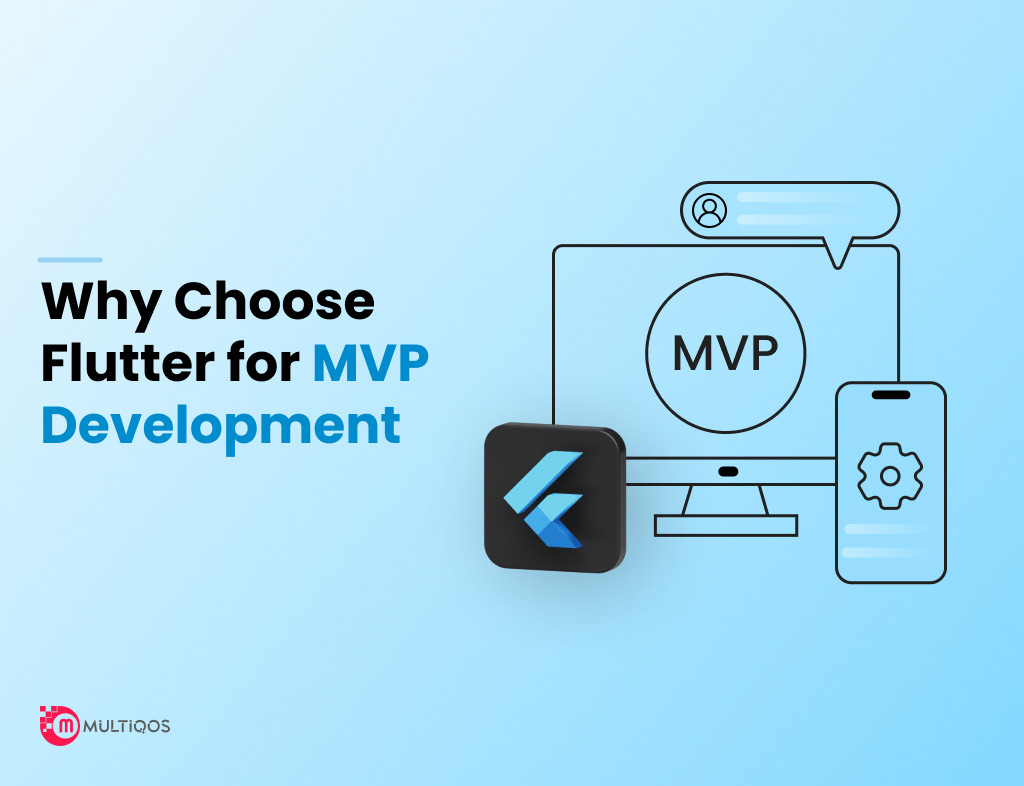
It is a well-known truth that the majority of startups fail. According to data by Startup Genome, 90% of companies fail. Even if they make it through the initial setup, 2/10 of new enterprises fail in their first year of operation, and 70% yield by their tenth year. Why? It is because startups require development choices that are versatile and effective without draining their resources or money to stand a chance.
The three main constraints on startups are time, money, and resources. Consequently, a Minimum Viable Product (MVP) app is developed as a way for the creator to experiment with product and service concepts while just making a small initial expenditure. The MVP has enough functionality to provide customers with a solid understanding of the nature of the product. After a quick launch, startups may gather input from their target market, luring investors, shaping their development plan, adding the features people desire, and start to create that crucial client base.
In this post, we’ll explore the significance of MVP (Minimum Viable Product) in modern businesses and delve into the valuable role of Flutter development services in building your company’s MVP. Let’s start by understanding what is MVP development and its importance before exploring its benefits with Flutter. In this post, you’ll learn what makes Flutter useful and reliable for MVP development.
What is MVP Development? – Exploring the Basics
MVP Development – Exploring the Basics: MVP, or Minimum Viable Product, is a fundamental version of a product that includes essential features. Its primary purpose is to validate the product idea and assess its performance among real users.
MVP development is the creation of a simplistic version of your concept with enough features to gauge its alignment with customer expectations. By utilizing MVP development, you can validate your business concept and gather valuable customer feedback. This will enable you to address their needs and concerns in subsequent product iterations.
What Are the Benefits of Adopting an MVP for a Business?
Flutter, introduced in December 2018, has attracted several software development firms. It includes updated widgets, bug fixes, and increased capabilities. Due to its open-source nature, Flutter for mobile MVP development has become the right choice.
But why?
It is because…
- A sizable community exists for Flutter and supports its users.
- Business organizations don’t have to pay a lot on license costs when they experiment.
- App creation is made more accessible because of Flutter’s accelerated speed. It allows users to access features and built-in tools.
What Makes Flutter a Best Option For MVP Development Platform?
Here are the reasons why you must create the MVP using Flutter:
Fast and Efficient Development Process
Cost restrictions have been a major barrier for companies trying to enter the mobility market since the dawn of time. Flutter offers a remedy for it by enabling the creation of apps with a single code base released for iOS and Android. This, in turn, makes it easier to work on both platforms separately and does so at a reasonable mobile app development cost. Flutter uses Google’s well-known expressive and adaptable user interfaces (UIs) to increase and improve the consumer experience.
Cross-Platform Compatibility:
Building a mobile app with Flutter allows significant cost reduction as cross-platform development reduces the need for building two separate native apps. With this framework, you can use one code base for iOS and Android applications development in parallel, translating into a smaller team with which you will build a product and save much time.
Hot Reload for Iterative Development
When choosing Flutter to construct an MVP, developers spend much less time creating. They can see changes made to the app code displayed on the screen simultaneously due to SDK’s included hot reload capabilities. Overall, this makes creating apps quick and straightforward, making it easy to forge close communication between the teams’ engineers, designers, and quality specialists. By using Flutter to create MVP applications, developers can quickly add new features and address issues with the hot reload capability.
Native-Like Performance and User Experience
The main selling point of Flutter is its ability to deliver native-like performance in the mobile app development process. Small businesses and startups with limited resources can also create cross-platform apps using Flutter, creating native-like apps without sacrificing functionality and features. With native experience and a single piece of code, Flutter enables businesses to simultaneously reach their target audience, including Android and iOS users.
Rich and Customizable UI Components
The development of Flutter enables seamless connections with well-known cloud platforms. As a result, functionality like analytics, cloud storage, authentication, accident reporting, and more may evolve. Flutter app development services assist in building fantastic UIs for both iOS and Android. Flutter-powered MVPs can be successfully introduced to the initial audience in this way. You may create a range of motions and animations to make your app’s interface appealing and beautiful with the aid of the pre-built widgets and UI elements.
Top Successful Businesses that Started with Minimum Viable Products
Starting a business can be daunting, but successful ventures have proven that a Minimum Viable Product (MVP) is a winning strategy. MVPs enable entrepreneurs to validate their ideas, gather user feedback, and iterate based on real-world data. Let’s explore some top businesses that began their journey with MVP development and achieved remarkable success:
Case Studies: Successful MVPs Built with Flutter
It’s interesting to see how MVPs were used to launch successful businesses. Let us run our eyes through a few most successful MVPs as developers employed Flutter for MVP development:
Airbnb:
Airbnb’s journey began with a visionary MVP concept during a time when hotels were the dominant option for travelers. The founders, Brian Chesky and Joe Gebbia noticed a surge in demand for accommodations during a local design conference in San Francisco. Seizing the opportunity, they set up a simple website advertising three air mattresses in their apartment, complete with breakfast – thus, the name “Air Bed and Breakfast” (later shortened to Airbnb).
The MVP experiment allowed them to test their hypothesis that people might prefer staying in someone’s home over a traditional hotel. To their surprise, all three air mattresses were booked, and the guests were delighted with the unique experience. This early success laid the groundwork for the idea to transform into a global platform connecting hosts and travelers from all corners of the world. With continuous iterations, Airbnb has revolutionized the travel industry, offering diverse and authentic accommodation options that cater to different preferences and budgets.
Uber:
Uber’s MVP development began when its co-founders, Travis Kalanick and Garrett Camp, experienced difficulties hailing a cab on a snowy night in Paris. This experience sparked the idea of creating a ride-hailing service accessible via smartphones. The MVP offered black car service to users in San Francisco, providing them with a more convenient and reliable alternative to traditional taxis.
The simplicity and efficiency of booking a ride through the app quickly gained popularity among users, leading to positive word-of-mouth and exponential growth. The initial success in San Francisco encouraged Uber to expand its services to other cities and countries, disrupting the transportation industry on a global scale. Uber’s user-friendly app and various service options, including UberX and UberPOOL, further cemented its position as a dominant player in the ride-sharing market.
Dropbox:
Dropbox’s MVP development focused on addressing a common challenge faced by users – syncing and sharing files across different devices. The MVP showcased a simple solution that allowed users to store files in a folder on their computer and access them from any device with an internet connection.
The positive feedback from early users and their enthusiasm for the product gave the Dropbox team the validation they needed to secure funding for further development. As Dropbox expanded its features, including collaborative file sharing and seamless integration with various devices, it became a leading cloud storage service widely adopted by individuals and businesses alike.
Instagram:
Instagram’s MVP was a game-changer in the world of social media and mobile photography. Co-founders Kevin Systrom and Mike Krieger developed a basic photo-sharing app with a unique feature – applying filters to images before sharing them. This simple yet creative idea allowed users to transform ordinary photos into visually appealing works of art.
The MVP’s immediate success indicated a strong demand for a platform that focused on visual storytelling. Instagram quickly evolved with additional features like Stories, IGTV, and Explore, becoming a leading social media platform with over a billion active users. Its influence on digital marketing and the rise of influencers has reshaped how people connect and engage with content online.
Zappos:
Zappos’ MVP development aimed to disrupt the online shoe shopping experience. Founder Nick Swinmurn started by visiting local shoe stores, taking pictures of shoes, and posting them on a simple website. When customers placed orders, he would buy the shoes from the local stores and fulfill the orders directly.
The positive customer response and early traction proved the viability of the online shoe retail concept. Zappos’ focus on exceptional customer service, a generous return policy, and a wide selection of shoes led to rapid growth and ultimately its acquisition by Amazon. Today, Zappos is renowned for its customer-centric approach, offering a wide range of footwear and clothing options to a diverse global customer base.
LinkedIn:
LinkedIn’s MVP development centered on connecting professionals and building a digital network for career development. Co-founder Reid Hoffman envisioned a platform that allowed professionals to create profiles, connect with peers, and discover job opportunities.
The early adoption of the platform by professionals from various industries provided crucial validation for the concept. LinkedIn’s emphasis on professional networking, job postings, and industry insights made it the go-to platform for professionals worldwide. Today, LinkedIn serves as a valuable resource for building professional relationships, seeking career opportunities, and fostering business connections.
These top successful businesses demonstrate the power of MVP development in bringing innovative ideas to life. Starting with a Minimum Viable Product allowed these companies to validate their concepts, adapt to user needs, and grow into industry leaders. These stories serve as inspiration for aspiring entrepreneurs to embrace the MVP approach and embark on their own journeys toward success.
Flutter for MVP Development: Why Should You Choose It?
1. Scalability
Flutter offers excellent scalability, allowing your MVP to grow seamlessly as your product evolves. Its flexible architecture enables smooth expansion and adaptation to handle increased user demands and enhanced features.
2. Minimize Development Costs
Building an MVP with Flutter can significantly reduce development costs. The ability to use a single codebase for both Android and iOS platforms means fewer development hours, resources, and maintenance efforts.
3. Better Documentation
Flutter boasts extensive and well-organized documentation, making it easier for developers to understand and implement various functionalities. This leads to faster development and reduces the learning curve for new team members.
4. Access to Native Features
Flutter provides access to native device features through platform channels, enabling seamless integration of device capabilities such as cameras, GPS, and sensors. This enhances the user experience by utilizing device-specific functionalities.
5. Minimal Resources Required
With Flutter’s hot reload feature, developers can instantly see changes without restarting the app, reducing turnaround time during development. This efficiency requires minimal resources, leading to quicker MVP development.
6. Enhanced and Flexible User Interface
With Flutter’s abundant collection of customizable widgets, developers can effortlessly design visually captivating and highly adaptable user interfaces. The ability to create expressive UIs that adapt to various screen sizes enhances user engagement and satisfaction.
7. Easy Integration with Backends
Flutter integrates smoothly with various backend technologies, allowing seamless communication between the app and servers or databases. This ensures real-time data updates and enhances your MVP’s functionality.
8. Strong Community Support
Flutter has a large and active developer community, contributing to extensive libraries, plugins, and resources. Strong community support ensures quick solutions to issues and access to knowledge.
MultiQoS: Your Trusted Partner for Successful Flutter MVP Development
Being a Top Flutter App Development Company, we know the advantages and uniqueness of the Flutter development process. We looked at various intriguing technologies before focusing on Flutter since it offers a unique approach to quickly developing a mobile app MVP for iOS and Android. You can hire us and seek Flutter app development services to create enterprise-grade apps integrating the most recent developments in cutting-edge technologies like AI, AR, and IoT.
Here’s why you should consider MultiQoS for bringing your MVP vision to life:
- Experience and Expertise
- UI/UX Excellence
- Scalable Solutions
- Cost-Effective Approach
- Dedicated Mobile Developers
- Cross-Platform Proficiency
- Client-Centric Approach
- Expertise in Mobile Platforms
- Transparency and Communication
Conclusion
Flutter often requires little time and work to produce an MVP. Additionally, it keeps the development costs cheap so you can have a user-friendly, robust, and interactive solution with all the desired features. The functionality and user experience of Flutter-built apps are excellent. Therefore, using Flutter for MVP development enables you to release the product rapidly and implement necessary modifications swiftly.
Ready to Transform Your App Vision into Reality?
Partner with our Dedicated Mobile Developers for Cutting-Edge Solutions and Unmatched User Experiences.
FAQ About Flutter For MVP Development
Flutter, an open-source UI application development kit (SDK) created by Google, empowers developers to craft native applications for mobile, web, and desktop platforms, all with a single codebase.
In Flutter, everything is open source and free. Thus, app developers can recycle the code, saving both time and resources.
In most circumstances, Flutter and React Native are both quick enough. Flutter, however, is thought to perform better than React Native right out of the box.
Flutter can operate across several interfaces due to its effective and practical GPU-executing user interface. It is also effective and cheap, making it unquestionably the best option for startup companies.
Flutter is the ideal solution for creating mobile application MVPs in a shorter timeframe for both Android and iOS platforms. Its cross-platform capabilities allow developers to use a single codebase, minimizing development efforts and costs. Flutter’s design-centric nature ensures supreme design and development quality with limited resources and manpower, making it a cost-effective option for app development.
Absolutely! Flutter is not limited to MVP development. It is a versatile framework that can be used for building full-fledged mobile applications, web applications, and even desktop applications.
Yes, Flutter is an excellent choice for startups and small businesses. Its cross-platform capabilities, rapid development features, and cost-effectiveness make it an attractive option for building MVPs and scalable applications on a budget.
Flutter provides platform channels that allow developers to access native device features, such as camera, GPS, sensors, and more. This ensures seamless integration of native functionalities into Flutter applications.
Yes, that’s one of Flutter’s key benefits. An MVP developed with Flutter can be deployed on both Android and iOS platforms simultaneously using the same codebase.
Absolutely. Flutter’s flexibility and scalability make it suitable for building MVPs with varying levels of complexity and incorporating advanced features as needed.
Get In Touch


